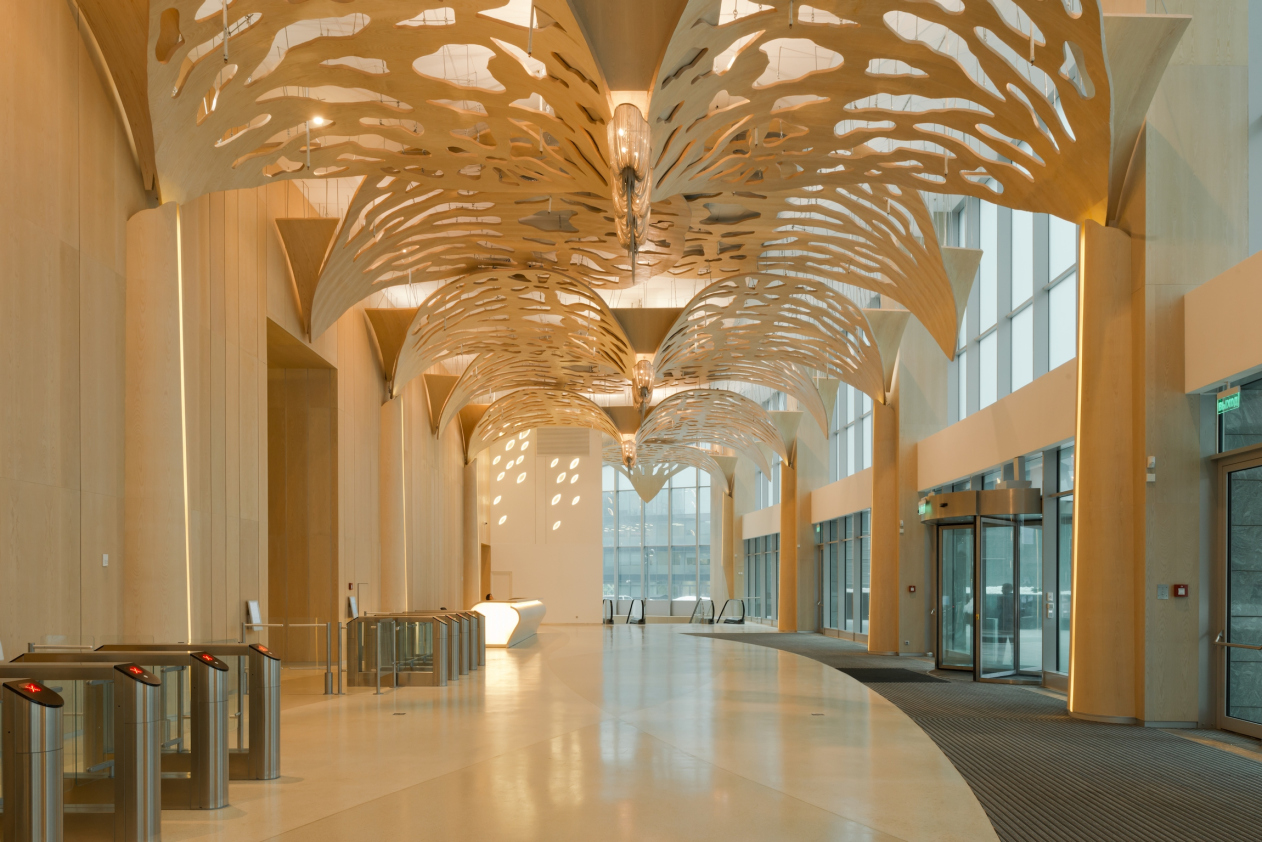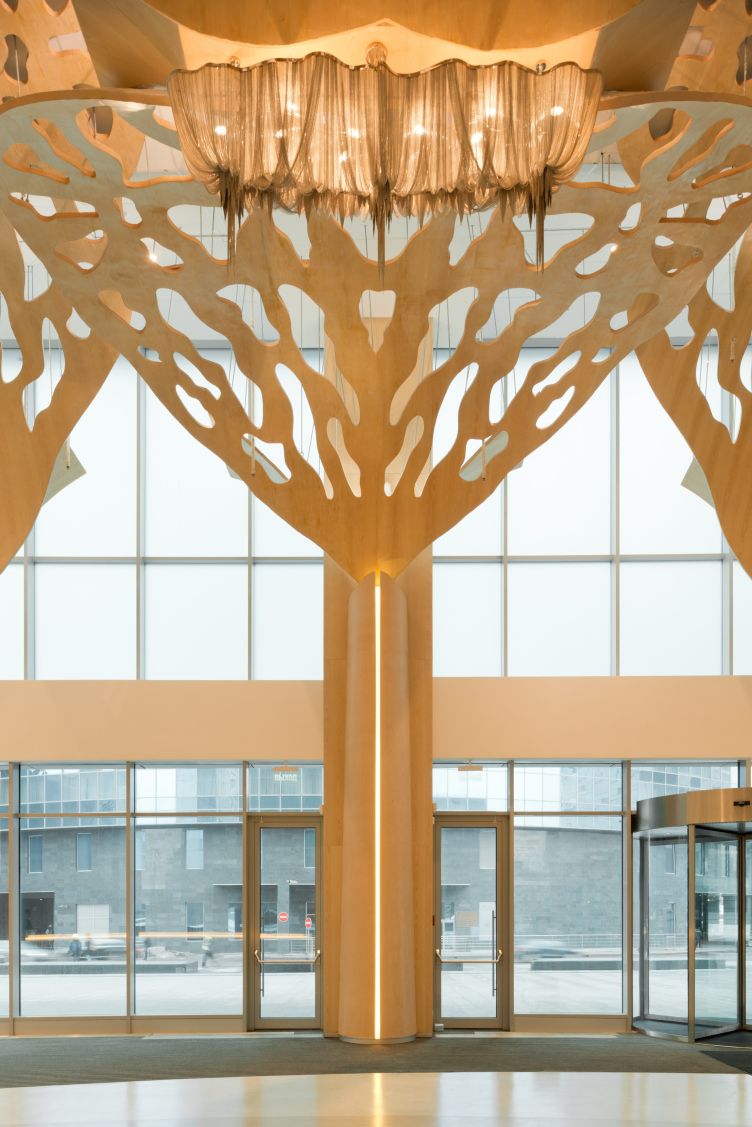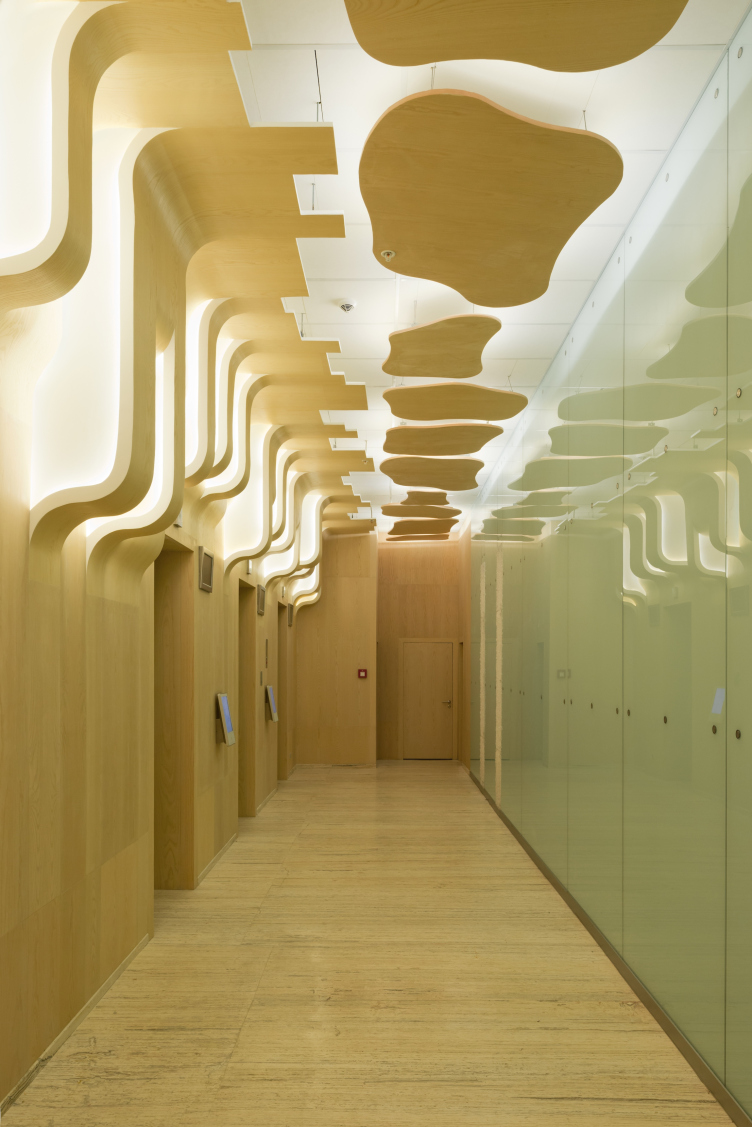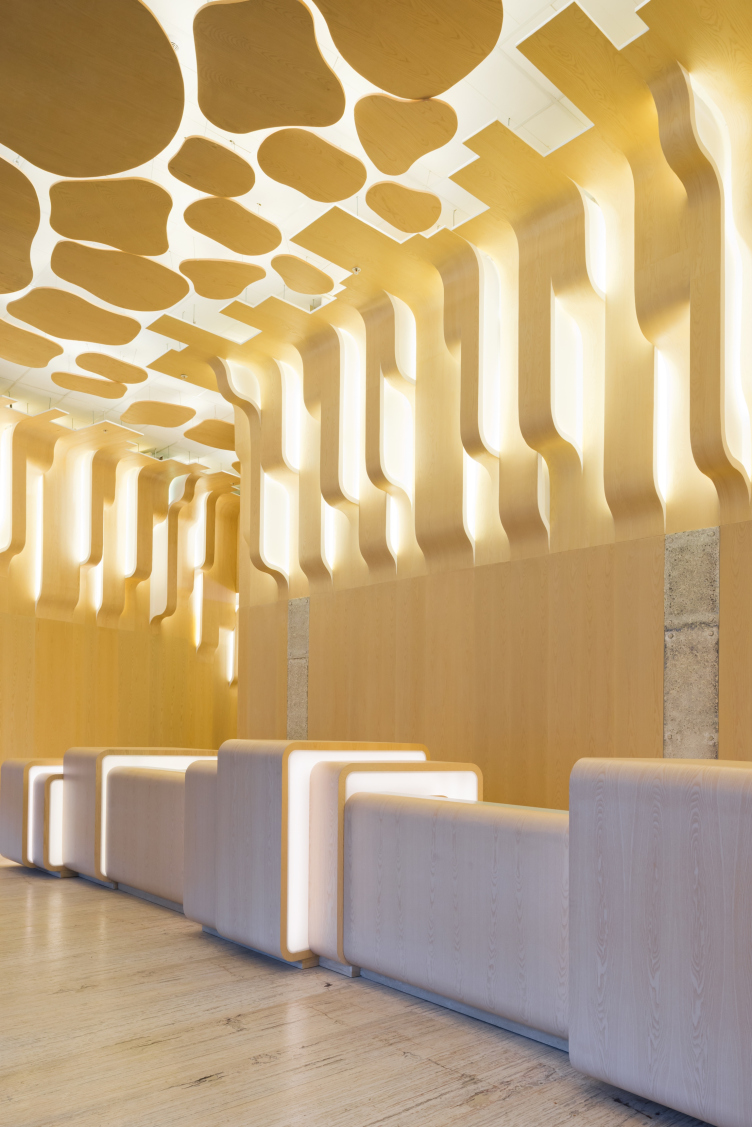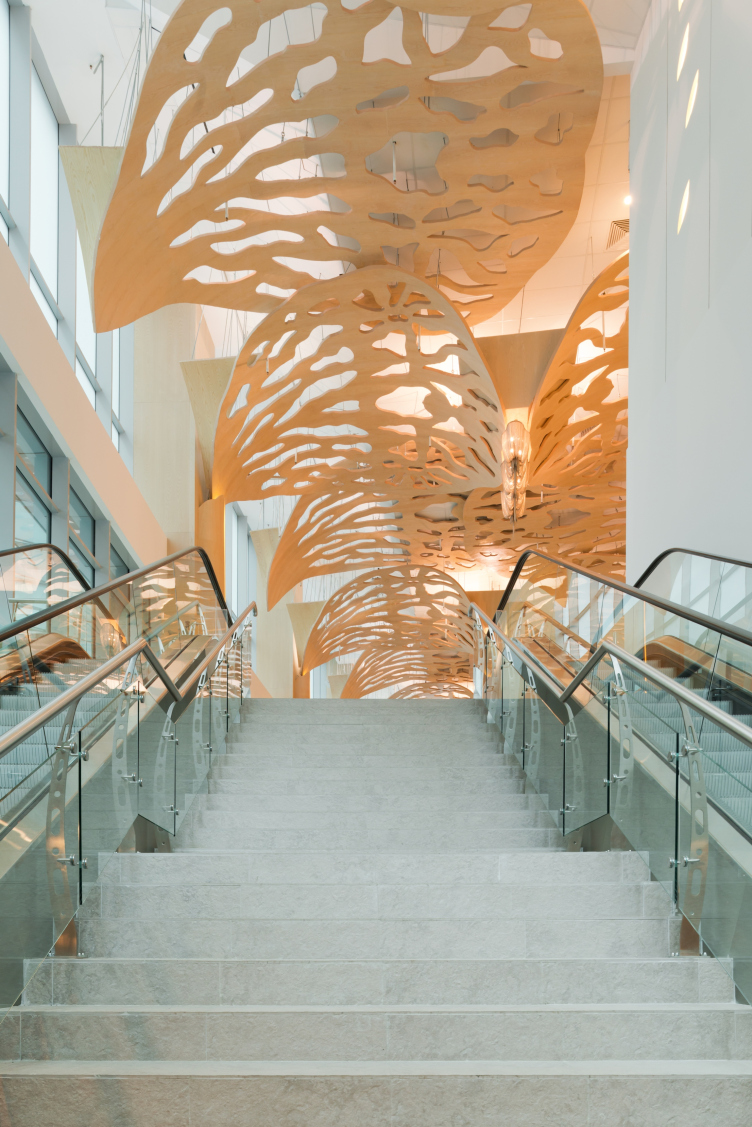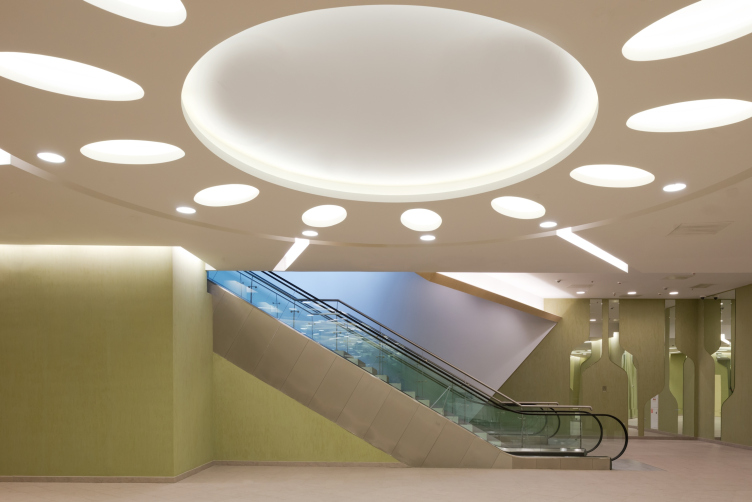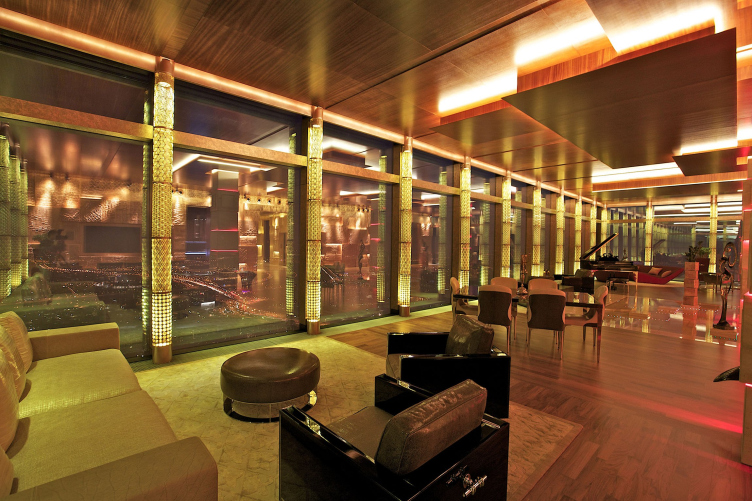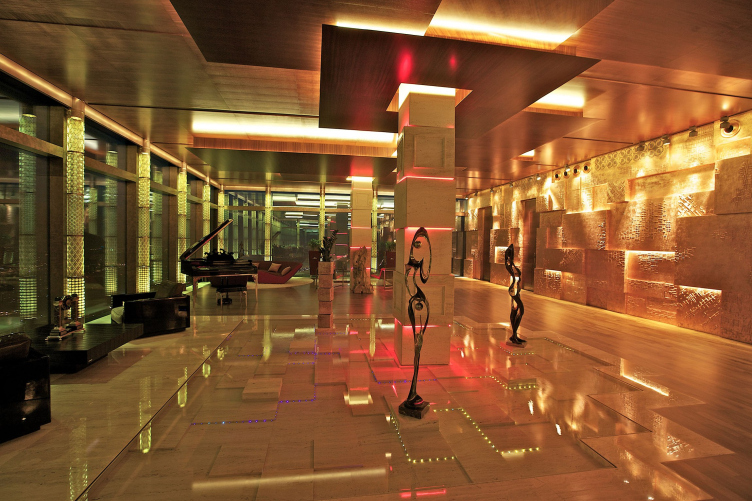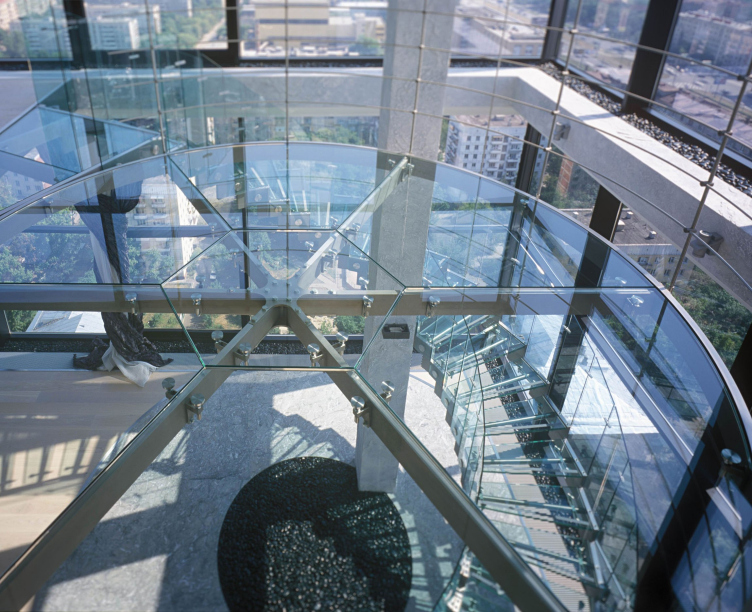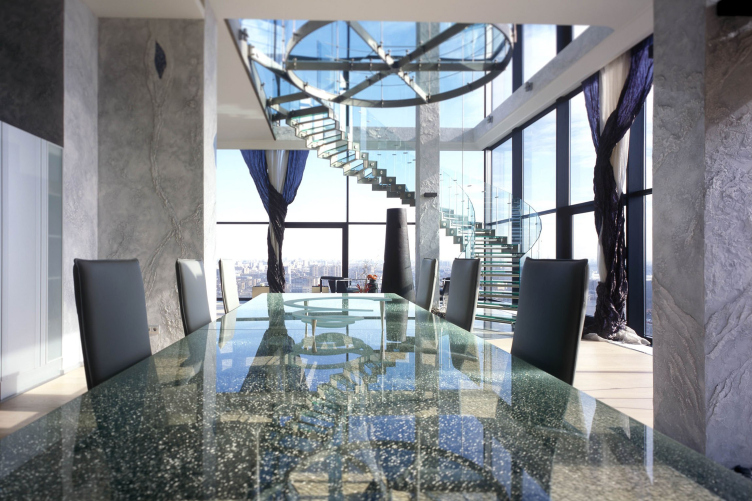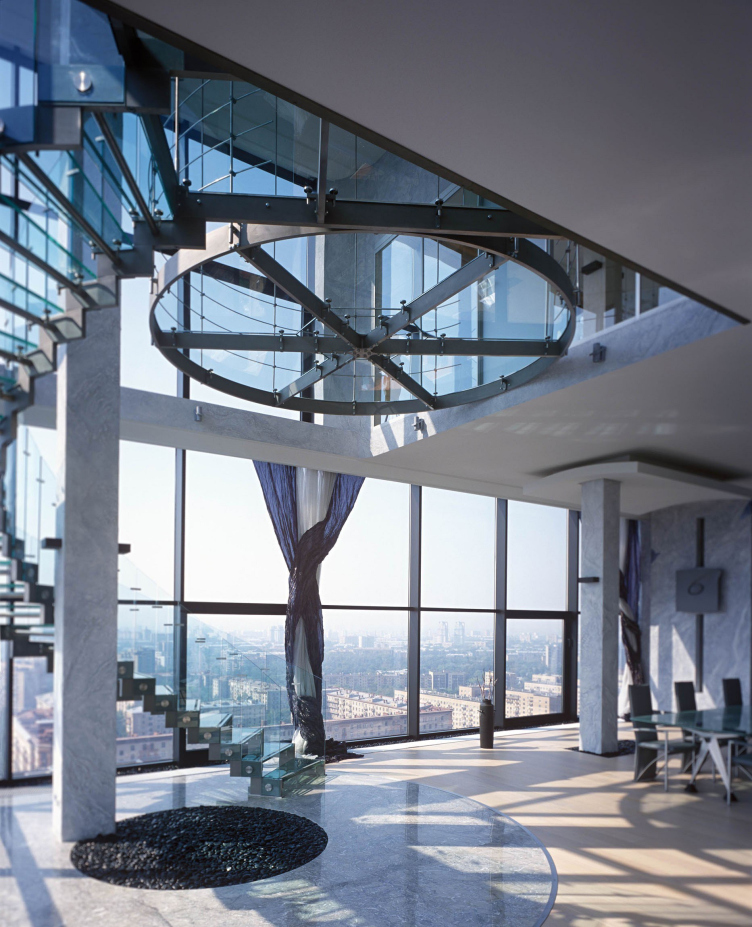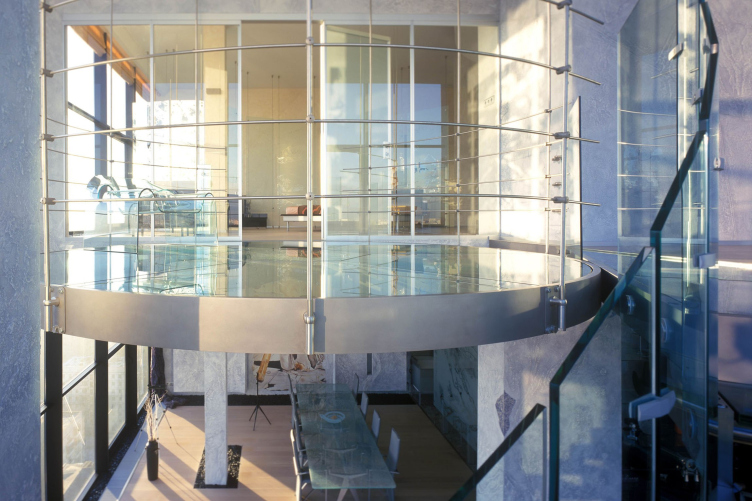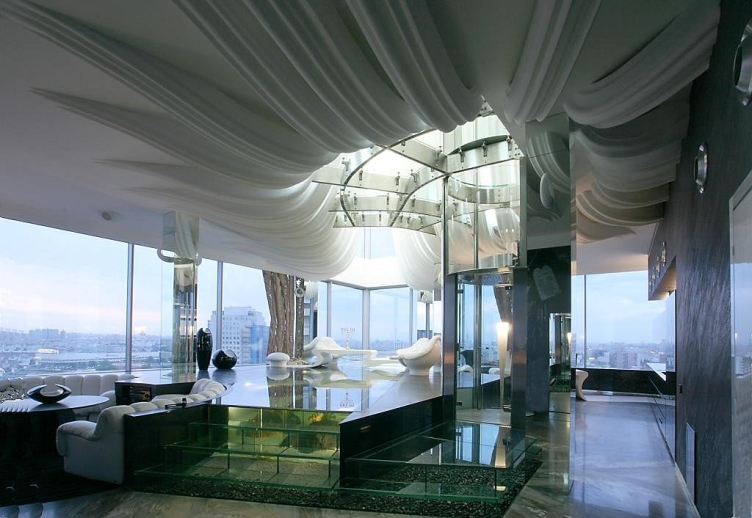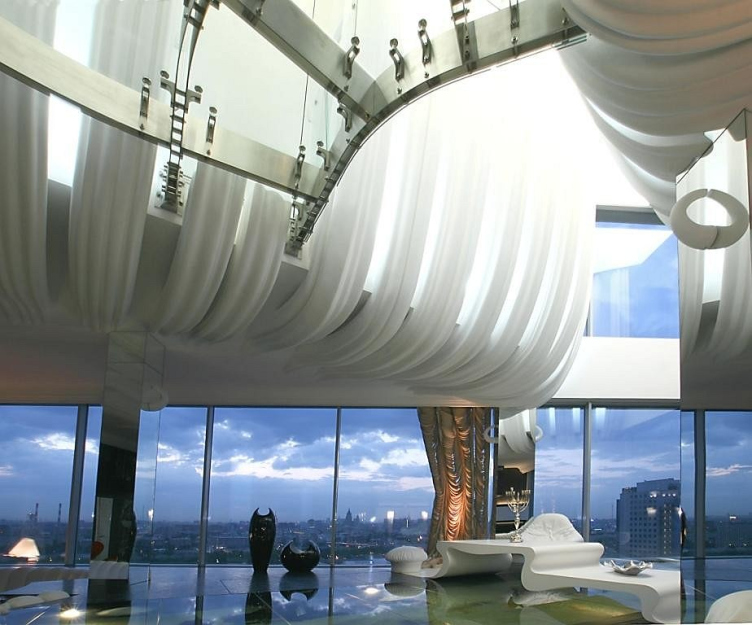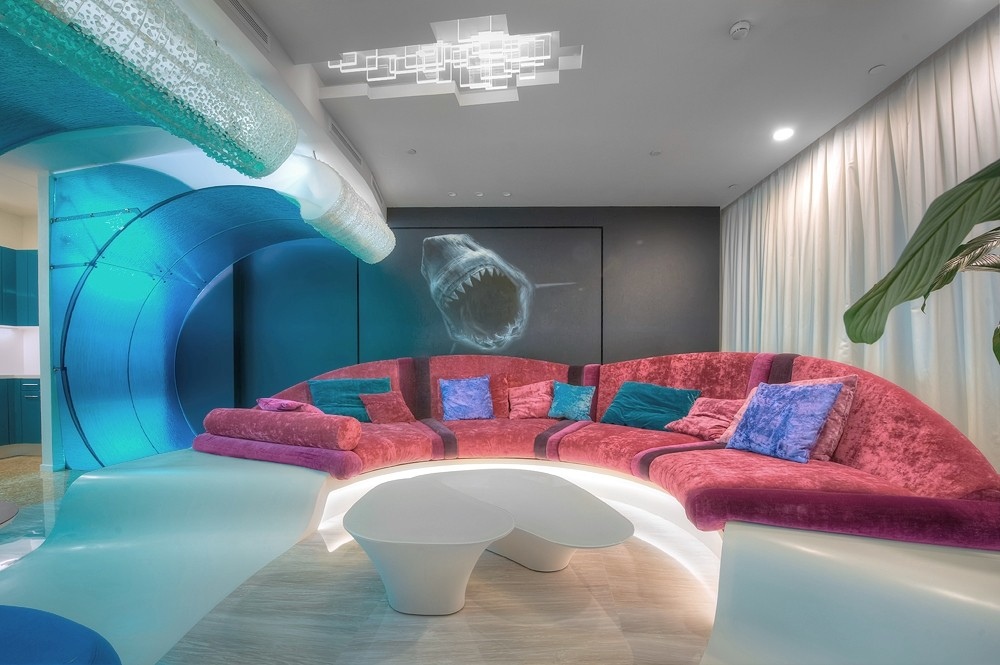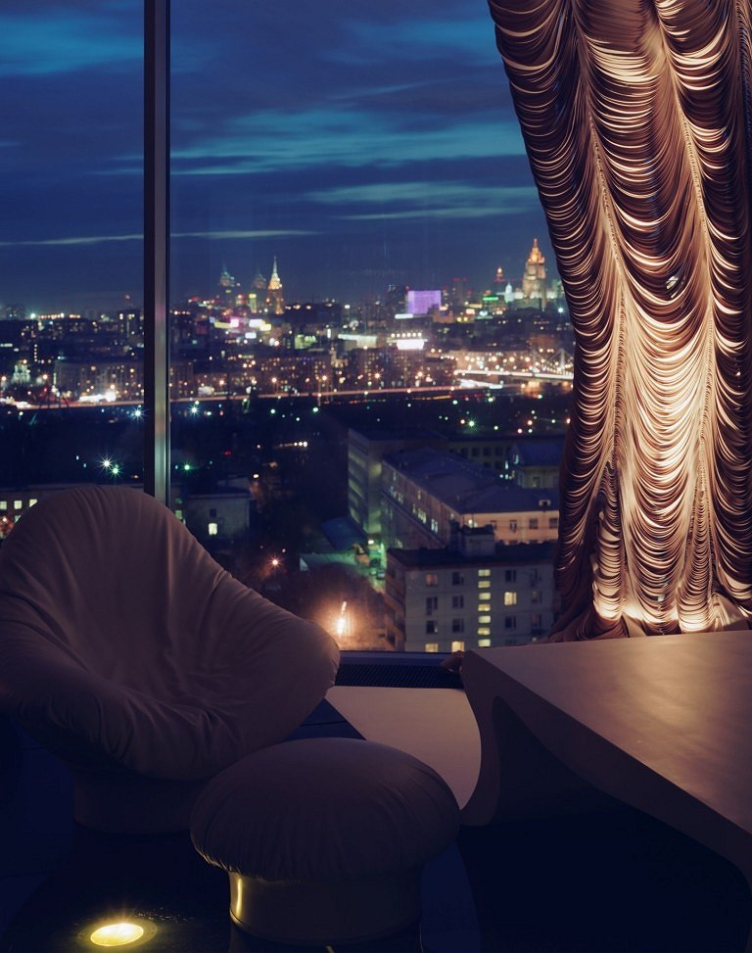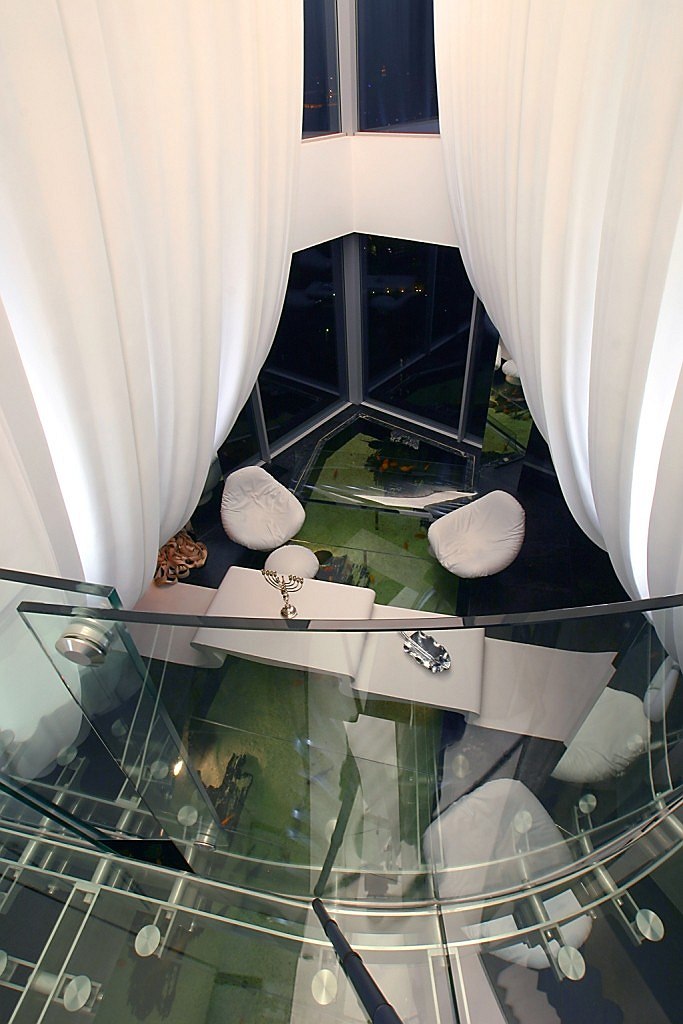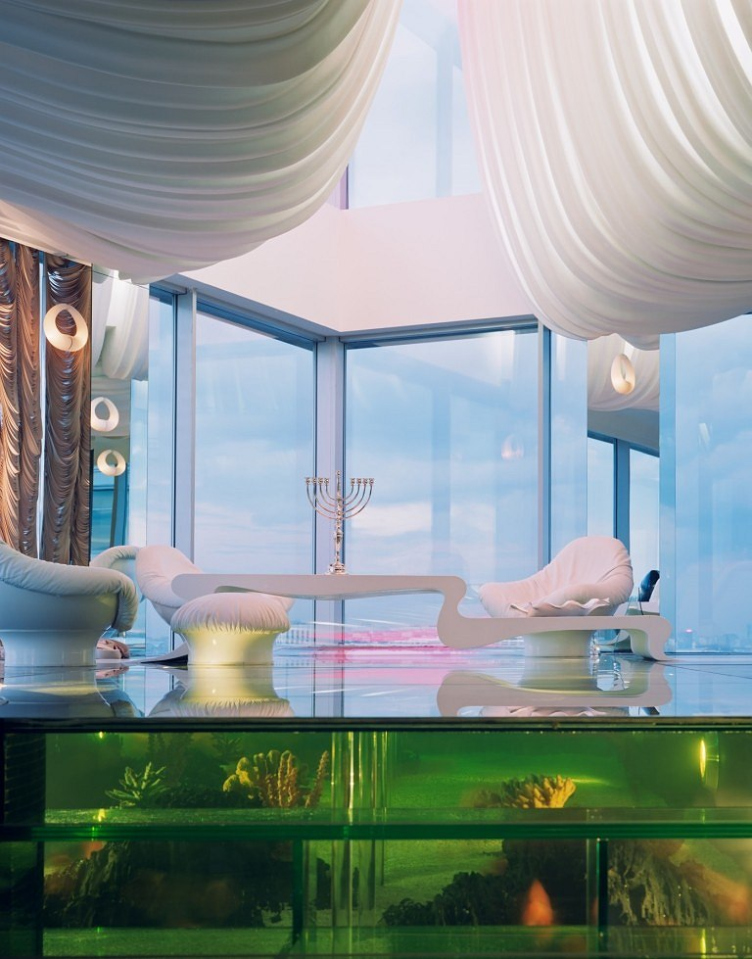Archi.ru:
– What do you think is the niche that the complex of Moscow City now occupies in the nation's capital structure?
Sergey Estrin:
– A traditional city – which Moscow definitely is – is a horizontal one. It has a historical center, shopping streets, industrial and residential areas; it can also have in it, let's say, ethnic or entertainment quarters. This is a city that we all are used to, a city we can easily find our way around in, and know what to expect from. But once this habitual paradigm gets such a perpendicular structure as this skyscraper complex, this, of course, becomes quite a noticeable phenomenon, both from the town-planning standpoint and in terms of how the people that live and work in it perceive the world around them. This is a totally different business model: not just a new quarter but a building that can be seen from virtually every part of the city; not just a house or a street but a set of individual addresses – the Eurasia tower, the Mercury tower, and so on. Which, of course, goes a long way to boost the popularity of such housing.
- Meaning, first of all, this is a whole new level of prestige?
– This is a whole new city format that is laden – and this is ever so important – with a totally different emotional content. The breathtaking panoramas, the sunrises and sunsets, the clouds drifting over and around you, the roofs that are "the fifth façade" of the city, and this is about the only way for you to take a good look at them, and they are beyond beautiful! And what about the night views? When viewed from the fiftieth floor, even the trivial traffic jams turn into an art object: when the city is dissected with glowing lines, red and yellow, you involuntarily start perceiving the geography of Moscow in a different way, with all of its boulevards and highways. Not everyone, by the way, will feel comfortable at such a great height, but if a person is psychologically ready for it, once they've felt the adrenaline rush, they will probably want to experience that feeling again. The very idea of the tower always teetering a little bit – at its highest point, the amplitude can reach a whole meter!
– What else does this format yield, besides the emotional experience?
– A skyscraper, as a rule, is a building that is multifunctional and one that is divided into zones: offices, a residential part, a retail part, and so on. Oftentimes, swimming pools and fitness centers are added, as well as conservatories, movie theaters, restaurants, and art galleries. Meaning – without ever leaving the building you can get virtually everything that a modern megalopolis has to offer. And I think it's not even about saving you the trouble of traveling around the city – I can hardly imagine somebody staying indoors for days – this restaurant and this garden will soon feel monotonous to him or her. But the very feeling of finding yourself in such a densely packed and saturated environment, as if a whole city stood up on end – is attractive for many people. You see, there is this type of country housing – the rural solitude, nature, sky, landscapes. And there is a city, bustling, full of life and mobility. And now a new format has come – when you are sort of in the city but at the same time a hundred meters above it, and it's also just as quiet, and you can admire the sunrises and the sunsets, the only difference being that you don't have to wait in traffic jams to finally get there. Of course, I am not speaking of people for whom this is their first or only residence – these will hardly ever opt for apartments in a skyscraper. But for those who maybe already has an apartment in the city, and a house in the country, this skyscraper residence may become an intriguing alternative.
– Obviously, this new urban environment calls for new architectural solutions, including the interior design ones?
– Absolutely! Of course, you might be tempted to go ahead and multiply manifold your time-tested techniques, scaling them five or ten meters up – and there you are! And this is, of course, something that many architects do, by the way. The result, however, looks rather stilted and monotonous. It is my opinion that an architectural stylistic device has to match the magnitude of the volume it is applied to. Take the entrance group, for example – this is a high-responsibility element that actually is the beginning of this new and exciting city environment for everyone who enters it. It must be perceived accordingly from the outside, and on the inside it must match the premises that will ensue, careful attention to detail being also absolutely necessary for the designer, no matter how grand the scale of the building might be. And these details must look great from every conceivable angle so that they will not look dull or monotonous. Such approach will let the interior live a long life and every time a person that enters it will be put in the mood that corresponds to a certain emotional state that this grand building deserves.
When we were thinking out the public spaces for the Eurasia Tower, we chose "Forest Symphony" as the leitmotif. The entrance group of the office area is decorated with stylized tropical trees – powerful trunks and wide crowns. Upon a closer look, however, one will find that there is a lot of details, every single one of which is unique. The slits in the wooden panels of the leaves are of various configurations, the veneer sheet is indeed made of wood, even if it covers a thirty-meter-wide wall; the "spots of light" that show through the foliage are the result of a sophisticated lighting system...
Public areas in the "Eurasia" Tower in the complex of "Moscow City". Implementation, 2014 © Sergey Estrin Architects
Public areas in the "Eurasia" Tower in the complex of "Moscow City". Implementation, 2014 © Sergey Estrin Architects
Public areas in the "Eurasia" Tower in the complex of "Moscow City". Implementation, 2014 © Sergey Estrin Architects
Public areas in the "Eurasia" Tower in the complex of "Moscow City". Implementation, 2014 © Sergey Estrin Architects
Public areas in the "Eurasia" Tower in the complex of "Moscow City". Implementation, 2014 © Sergey Estrin Architects
For "Eurasia", we did the public interiors of all the seventy floors, starting with the ascent from the underground level where the visitor was to already get a feeling of being in a different world, before they ever reached the elevator lobby.
The entrance to the residential part – situated on the ground level – is also designed in the vein of this "forest" theme: again, large elements are there, but these are not as large as in the office group – all due to the fact that hall space is smaller in itself, just as the part that follows it. All the lights are of the hidden type – it was important for us that it should not be concentrated on any specific detail but glow out of nowhere, as if oozing through the leaves like rays of sunlight.
Public areas in the "Eurasia" Tower in the complex of "Moscow City". Implementation, 2014 © Sergey Estrin Architects
Public areas in the "Eurasia" Tower in the complex of "Moscow City". Implementation, 2014 © Sergey Estrin Architects
Public areas in the "Eurasia" Tower in the complex of "Moscow City". Implementation, 2014 © Sergey Estrin Architects
Public areas in the "Eurasia" Tower in the complex of "Moscow City". Implementation, 2014 © Sergey Estrin Architects
– We've been speaking about the entrance groups. And what about the interiors of the upper floors and penthouses?
– Well, what really makes them different is the sheer fact that the city panorama outside the window is such a powerful sight to see that you cannot really compete with it, and you needn't, either. However, you still want to achieve the effect that when a person turns away from the window he sees something that deserves to be there next to this magnificent view. Designing a penthouse at the 76th floor of one of the Moscow City towers, we put really a lot of time and effort into a living room wall trying to achieve a certain proportional correlation with a wildly beautiful view. It was a wall about twenty meters long, and we designed it as a stack of cubes covered with leaf copper that looks like exposed reinforcing bars are showing through it - and we shined glowing rays of light over it, like over a theater curtain.
Penthouse in "Moscow City". Implementation, 2011 © Sergey Estrin Architects
Penthouse in "Moscow City". Implementation, 2011 © Sergey Estrin Architects
– Doesn't sound like a piece of living space in its traditional meaning...
– Exactly! And this is where I came in – that such a penthouse is probably not the only apartment that the owner has. Of course, this place includes comfortable bedrooms, and a kitchen, and everything that you might ever need to live a normal life – but you can still hardly fancy a family with three kids in such an interior, these kids jumping around and you having a hard time trying to figure out how to stop them from hurting themselves. Our point, however, is this: if Moscow has gotten a whole new different architectural environment, it must also look different.
For example, in "Sokolinoe Gnezdo" ("Hawk's Nest") housing complex we "suspended" a glass island on the second level of the penthouse - this island is only accessible by a glass stairway, and you get a complete sensation of hovering over the city.
Two-level penthouse in "Sokolinoe Gnezdo". Implementation, 2003 © Sergey Estrin Architects
Two-level penthouse in "Sokolinoe Gnezdo". Implementation, 2003 © Sergey Estrin Architects
Two-level penthouse in "Sokolinoe Gnezdo". Implementation, 2003 © Sergey Estrin Architects
Two-level penthouse in "Sokolinoe Gnezdo". Implementation, 2003 © Sergey Estrin Architects
Two-level penthouse in "Sokolinoe Gnezdo". Implementation, 2003 © Sergey Estrin Architects
And in the penthouse of one of the Constellation towers that's on the Shabolovka Street, we decorated the ceiling curvilinear plaster panels that looked like clouds, while some of the rooms were designed in a futuristic "cosmic" style.
Penthouse on the Shabolovka Street. Implementation, 2007 © Sergey Estrin Architects
Penthouse on the Shabolovka Street. Implementation, 2007 © Sergey Estrin Architects
There was also one apartment in the Moscow Tower that had nothing nebulous to it – instead, we used another "striking" element, a huge azure wave with a lacy edge of sea foam. What's interesting about this apartment is the fact that its ceilings are not really high, almost like in a regular house, but the usual interior, neatly stuccoed, with wooden skirting boards and plywood door panes is the last thing you want to do on the fortieth floor with such panoramas!
Interiors of the penthouse of Mr.Sh in "Moscow City". Implementation, 2012 © Sergey Estrin Architects
Interiors of the penthouse of Mr.Sh in "Moscow City". Implementation, 2012 © Sergey Estrin Architects
Interiors of the penthouse of Mr.Sh in "Moscow City". Implementation, 2012 © Sergey Estrin Architects
– So, do you want to say that classic interior elements simply cannot fit in such living space?
– Again, if you take a certain technique, you don't want to use it verbatim – you need to revise it in reference to the current situation. Take such a seemingly trivial thing as curtains – each time we had to reinvent them over again! In this case, they don't perform their usual utilitarian function of shading the window - it is clear that with such breathtaking views you won't ever want to draw the curtains. Rather, you need them to compositionally link the ceiling and the floor. In the Shabolovka project, for example, each curtain is in fact an art object made of several kilometers of vertical Venetian blinds that, when backlit from below, look like a wooden sculpture. This is just the right example of a large-scale solution that it took us a long time to find because traditional techniques and materials were totally misplaced here.
Penthouse on the Shabolovka Street. Implementation, 2007 © Sergey Estrin Architects
Penthouse on the Shabolovka Street. Implementation, 2007 © Sergey Estrin Architects
The light has also its own specifics here. Generally, what you want to do most often with the light in this case is just turn it off, so you don't want to lay any particular stress on the lights. At the same time, you need to have a sufficient number of spotlights and you need to provide for different lighting scenarios. In the City, for example, we hid the lights into laser-engraved columns – they visually organize the place, and they are pretty decorative themselves. And in the Shabolovka project we hid the lights above the "clouds" on the ceiling, thus getting a kind of light that's very close to the ambient light behind the windows.
Penthouse on the Shabolovka Street. Implementation, 2007 © Sergey Estrin Architects
And as for the classic you asked me about... Well, of course, in such an interior you cannot run plasterwork over the cornice and you cannot use columns from a ready-made plaster items catalogue. But if we are to take, say, the base of some classic column, and make its shaft just stop dead at the ceiling – well, it didn't exactly match the ceiling height here – and place the column's head somewhere on the hundredth floor – this would be a very powerful thing to do. And, again, this will be a solution of a whole new level corresponding and proportionate to the new space paradigm.
